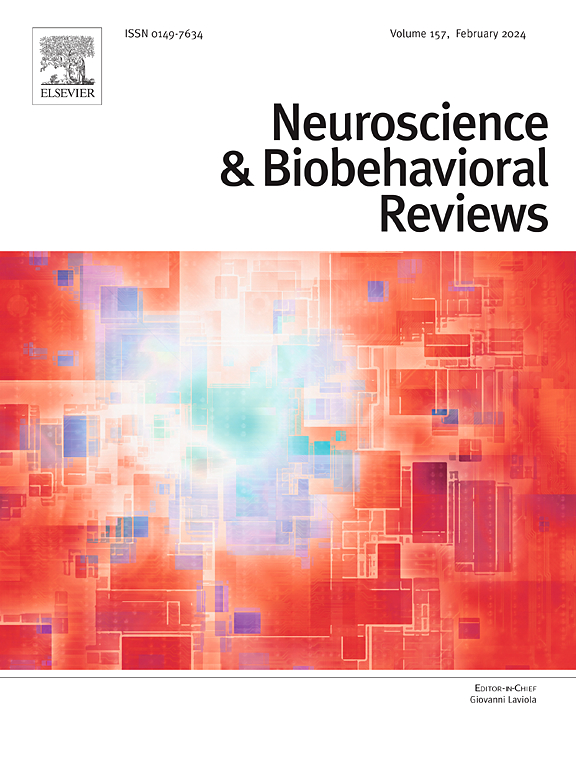Transdiagnostic functional neuroimaging connectivity features in depression and anxiety in adolescence: A systematic review
IF 7.9
1区 医学
Q1 BEHAVIORAL SCIENCES
引用次数: 0
Abstract
Background
Previous research has indicated that individuals with depression and anxiety disorders may similarly changes in brain connectivity compared to healthy control. These patterns of altered connectivity may emerge upon disorder onset in adolescence. Establishing shared and specific patterns at this early stage can help investigate underlying biological processes, with implications for intervention, but remaining unclear whether adolescent MDD and AD are associated with similar or distinct functional connectivity patterns.
Objective
To determine similarities and differences in brain connectivity neuroimaging between adolescent MDD and AD.
Methods
Eligibility criteria were established following PICOS. We conducted searches using controlled vocabulary and searching syntax on PubMed, Scopus, ScienceDirect, and Web of Science databases, up to January 31, 2024. The quality of papers was assessed using PRISMA.
Results
5137 papers were retrieved, with 38 meeting the inclusion criteria. In the synthesis of results, it was found that adolescent MDD patients exhibit increased connectivity within default mode network (DMN), especially in areas posterior cingulate cortex and medial prefrontal cortex; and salience network (SN) including anterior cingulate cortex and insula. Adolescent AD patients show hyperconnectivity and dysregulated activity in DMN, enhanced connectivity within SN including amygdala. MDD and AD both show involvement of limbic system including amygdala and hippocampus.
Conclusion
Results suggest both adolescent MDD and AD exhibit alterations in connectivity of SN; disrupted connectivity within DMN; dysregulation in connectivity between limbic and sensorimotor system. They also differentiate in certain connectivity patterns. These could serve as biomarkers for future research on transdiagnostic features across psychiatric disorders.
青少年抑郁和焦虑的跨诊断功能神经影像学连通性特征:一项系统综述。
背景:先前的研究表明,与健康对照组相比,抑郁症和焦虑症患者的大脑连通性可能发生类似的变化。这些连通性改变的模式可能在青春期发病时出现。在这个早期阶段建立共享的和特定的模式可以帮助调查潜在的生物学过程,对干预有影响,但尚不清楚青少年重度抑郁症和阿尔茨海默病是否与相似或不同的功能连接模式相关。目的:探讨青少年MDD与AD在脑连通性神经影像学上的异同。方法:根据PICOS建立入选标准。我们使用受控词汇和搜索语法在PubMed、Scopus、ScienceDirect和Web of Science数据库上进行了搜索,截止到2024年1月31日。采用PRISM评估论文质量。结果:共检索到5137篇论文,其中38篇符合纳入标准。综合结果发现,青少年MDD患者在默认模式网络(DMN)内的连通性增加,特别是在后扣带皮层和内侧前额叶皮层区域;突出网络(SN)包括前扣带皮层和脑岛。青少年AD患者表现为DMN的超连通性和活动失调,SN内包括杏仁核的连通性增强。抑郁症和阿尔茨海默病均表现出杏仁核和海马体等边缘系统的受累。结论:青少年MDD和AD均表现出SN连通性的改变;DMN内连接中断;边缘与感觉运动系统连接失调。它们在某些连接模式上也有所区别。这些可以作为未来研究跨精神疾病的跨诊断特征的生物标志物。
本文章由计算机程序翻译,如有差异,请以英文原文为准。
求助全文
约1分钟内获得全文
求助全文
来源期刊
CiteScore
14.20
自引率
3.70%
发文量
466
审稿时长
6 months
期刊介绍:
The official journal of the International Behavioral Neuroscience Society publishes original and significant review articles that explore the intersection between neuroscience and the study of psychological processes and behavior. The journal also welcomes articles that primarily focus on psychological processes and behavior, as long as they have relevance to one or more areas of neuroscience.

 求助内容:
求助内容: 应助结果提醒方式:
应助结果提醒方式:


